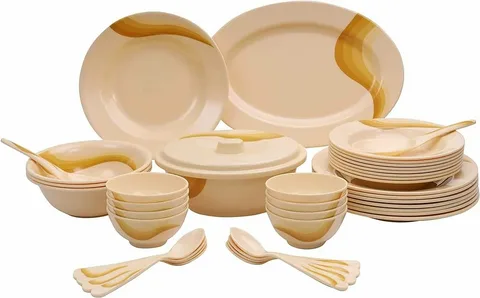What’s the Secret Behind Eye-Catching Retail Products?

When you walk down a supermarket aisle some products catch your eye immediately while others disappear among hundreds of options. The secret often lies in how products are presented. People are drawn to colors, shapes and textures that stand out. For example, simple packaging can make a snack look more appealing.
How Does Packaging Affect Customer Choices?
Packaging is more than a box or wrapper; it is the first impression of a product. Consumers often judge quality based on the outside. For example a neatly packaged chocolate bar may feel better than a similar one with a plain wrapper. Packaging communicates trust and quality. Research shows over 70% of consumers are likely to try new products if packaging looks appealing.
Can Color Really Change Buying Decisions?
Colors affect people in many ways. Red can create excitement, green suggests natural products and blue can make products feel reliable. That is why brands choose colors carefully. When people shop they often make split-second decisions based on colors. A package with colors can draw attention better than one with plain colors.
Small details like colored text or highlights can make a difference. Consumers remember products with consistent colors. Colors also set expectations about taste or quality. For example orange and yellow on personalized snack packaging may suggest citrus or cheesy flavors. Brands use color to make products attractive and communicate messages silently to buyers.
Why Does Shape and Structure Matter in Packaging?
Shape can make products memorable. Rectangular boxes are common but other shapes like hexagon tubes or curved boxes stand out. The structure of packaging can make storage, carrying or display easier. Unusual shapes can make products feel different or important. For example triangular chocolate bars or circular snack tin might catch shoppers' eye more than rectangles. The feel of the package also matters. Smooth surfaces may feel simple while textured surfaces can feel careful. Retailers pay attention because packaging is often the first way to make a product remembered. Functional design that combines usability with shapes can affect sales.
How Important Is Storytelling in Packaging?
Every package tells a story. Even without words design can suggest quality origin or flavor. A custom box with pictures of farm ingredients can make customers feel the product is natural. Storytelling is subtle but effective in influencing decisions. People connect with stories and packaging can be a silent storyteller. Small bakeries in the USA increased sales by adding short stories about how their treats were made with local ingredients. These touches build trust and make the product feel personal. Package becomes more than box; package becomes conversation between brand and customer.
What Role Does Material Play in Consumer Perception?
The type of material used in packaging communicates quality. Cardboard metal tins, glass jars and plastic each give different impressions. Cardboard can feel natural glass can feel solid and metal can feel secure. Material affects functionality such as keeping food fresh or easy to transport. Consumers are aware of sustainability. Packaging that is recyclable or biodegradable can affect buying decisions because people support brands that care for the environment. Many brands overlook this but material choice can differentiate products. A product in sturdy eco-friendly material protects the product and signals attention to the customer.
How Can Personalized Packaging Build a Connection With Customers?
Personalization makes products feel special. Custom packaging allows brands to create a unique identity. Printing customers’ names using themes for seasons or customizing designs for events can create connections. People feel recognized when a product seems made for them. Even small businesses benefit from this approach. Packlim helps startups and food businesses design packaging that communicates brand stories and connects with customers.
Why Do Graphics and Typography Matter?
Visual design elements like fonts illustrations and logos affect attention. Typography can show if a product is fun, serious or solid. Graphics can suggest flavor quality or lifestyle linked to the product. For example, custom food boxes with playful fonts may attract children or young adults while simple fonts can appeal to adults looking for premium products. Placement of logos and images guides shoppers' eyes. Thoughtful graphics make understanding products easier at glance. Effective design communicates all this without overwhelming shoppers ensuring the product is clear and visible.
How Do Trends Influence Packaging Design?
Packaging trends change constantly. Minimalism eco materials metallic finishes and QR codes are popular today. Trendy packaging appeals because the product feels current. However, following trends is not enough. Brands must balance trends with identity. Consumers notice when a package feels authentic rather than just following trends. Snack brands can adopt trends while keeping style to create packaging that resonates. Retailers track trends because trendy designs encourage purchases and create social interest. Brands that understand consumer preferences can use them to improve product appeal.
Why Is Functionality Important Alongside Design?
Products may look appealing but if packaging is hard to open or does not protect product customers are disappointed. Functional packaging includes resealable bags, easy-to-pour boxes or boxes that prevent damage. Functionality also affects convenience. Snacks that are easy to carry or store will be chosen over one that is not. Brands combine functionality with design to ensure positive experience from first interaction to last. Good packaging shows the brand cares about the customer's experience, not just about the product's appearance.
How Can Small Details Create a Big Impact?
Small details like embossing foil stamping window cutouts or custom patterns can make a product feel different and unique. These details also communicate quality without words. A custom box with a small window showing the product gives transparency and builds trust. Shoppers are drawn to cues that suggest care. Small touches can turn a simple product into something remembered. Startups often overlook small design elements but these can make a difference between a product that is noticed and one that is ignored.




